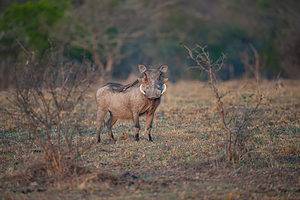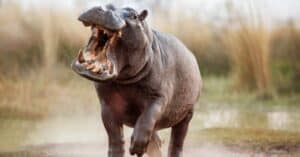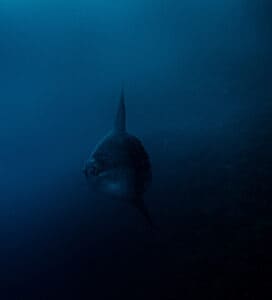Are you searching for a list of nine-letter animals? Well, thankfully, we’ve compiled just that. Check out this comprehensive list of 30 amazing nine-letter animals and learn some interesting facts about the animal kingdom!
1. Crocodile
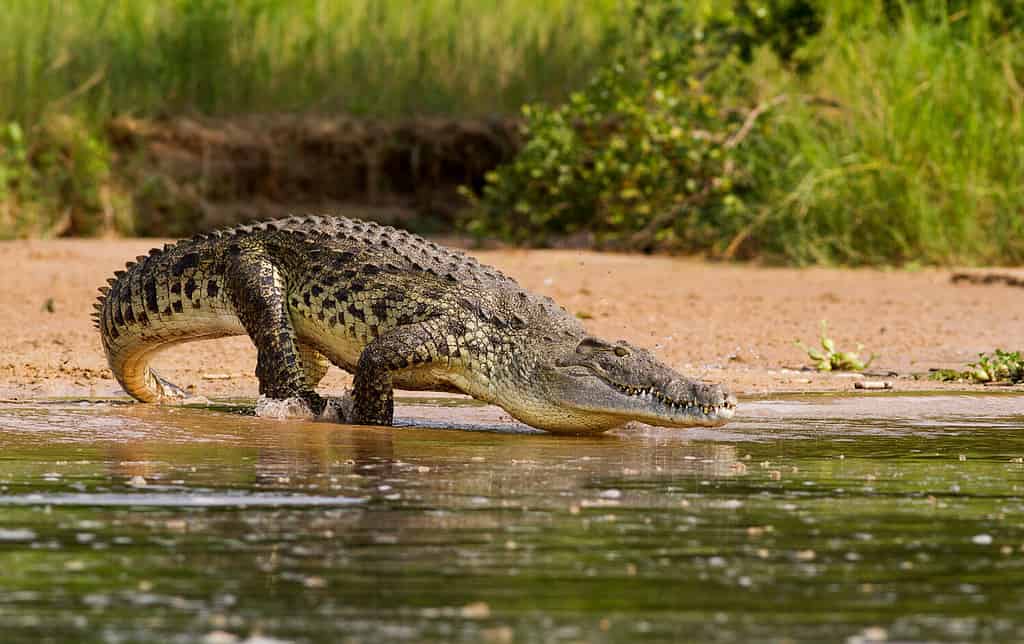
Crocodiles are one of the most impressive animals, measuring 20 feet long and weighing 2,000 pounds.
©diegooscar01/Shutterstock.com
These enormous semi-aquatic reptiles have an ancient lineage, relatively unchanged for millions of years. Crocodiles can grow up to 20 feet long and weigh over 2,00 pounds! If that isn’t enough to keep you out of the water, these reptiles also have an extreme bite force and can swim over 20 miles per hour. These incredible animals are one of the fiercest and most misunderstood creatures. Did you know crocodiles make great parents? Despite their fearsome nature, mother crocodiles are very gentle and protective of their babies.
2. Orangutan
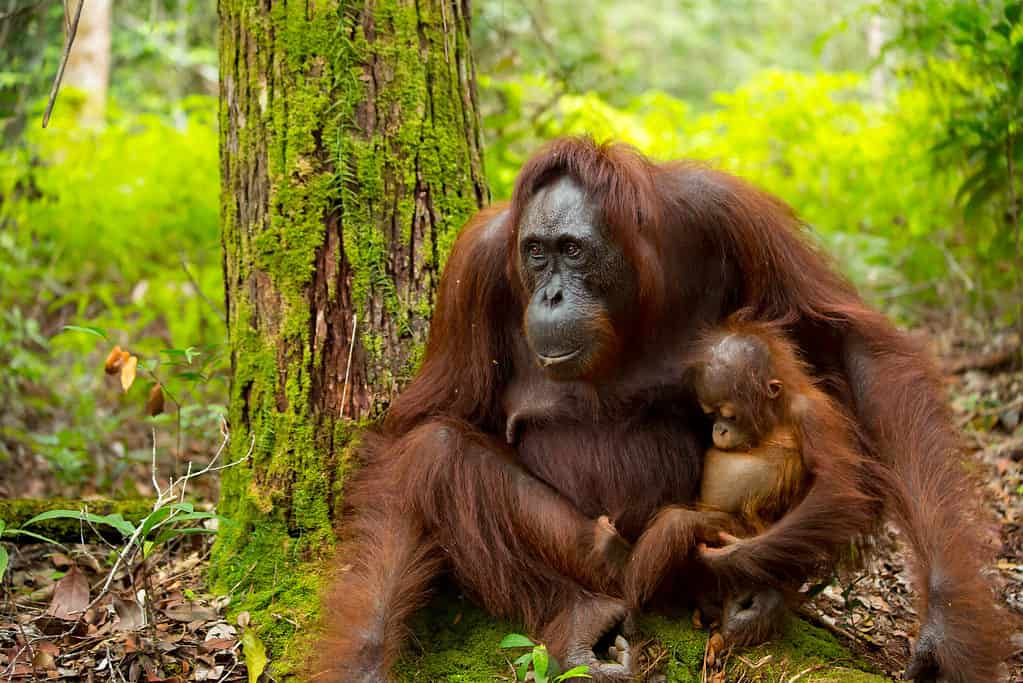
Orangutans are the heaviest tree-dwelling animals in the world.
©Katesalin Pagkaihang/Shutterstock.com
The orangutan is a great ape native to the rainforests of Malaysia and Indonesia. This nine-letter animal is the heaviest tree-dwelling animal in the world. They spend their days swinging through dense forest canopies, thanks to their 7-foot-long arm span. Many live up to 50 years old in the wild, with most males not maturing until 35.
3. Wolverine
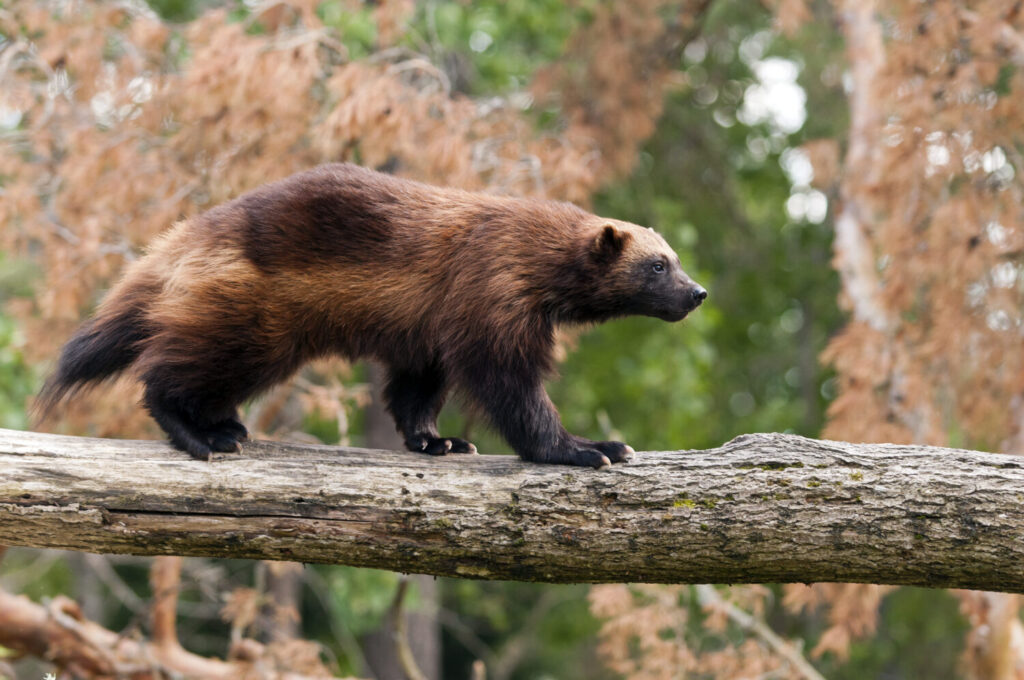
Wolverines refrigerate their prey in the snow.
©Nazzu/Shutterstock.com
This muscular carnivore is a solitary animal of alpine tundra and mountain forests. Wolverines live in dens and possess snowshoe-like feet that help them traverse snowy and rugged terrain. They have strong jaws and an excellent sense of smell, sniffing out burrowing animals, which they kill and refrigerate in the snow. This fearless animal is even known to drive off packs of wolves and grizzly bears to protect their food stores.
4. Porcupine
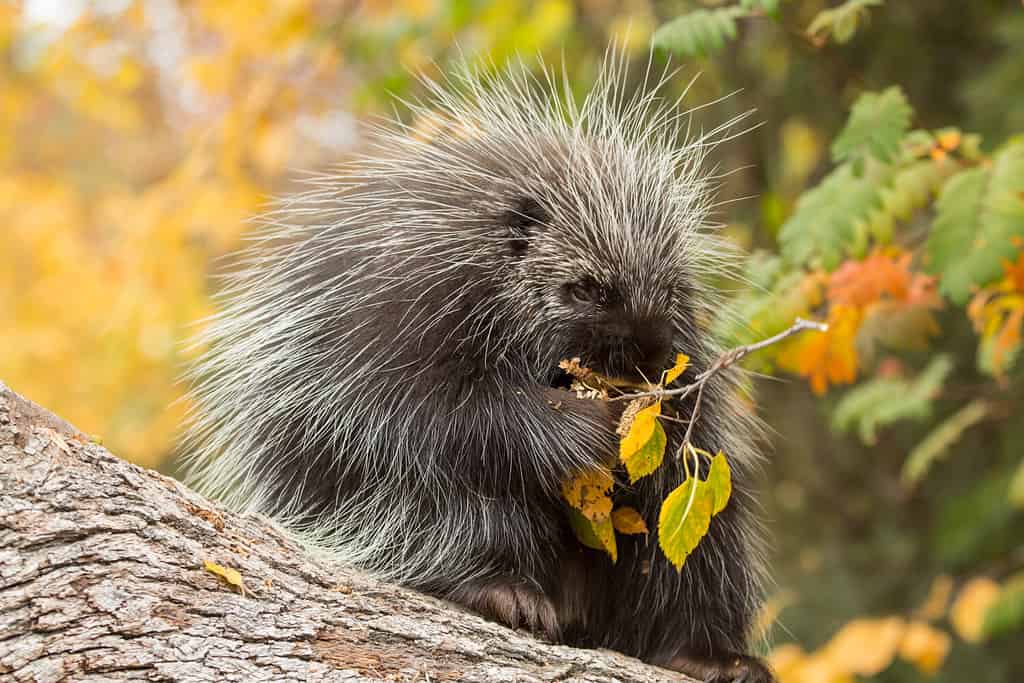
Porcupines occasionally build nests in trees.
©Warren Metcalf/Shutterstock.com
The porcupine is a large quill-covered rodent native to North American forests. Despite their dangerous-looking exterior, porcupines are rather gentle creatures who live solitary lives. While they spend most of their time on the ground, they are also excellent climbers and swimmers, even occasionally building tree nests.
5. Barracuda
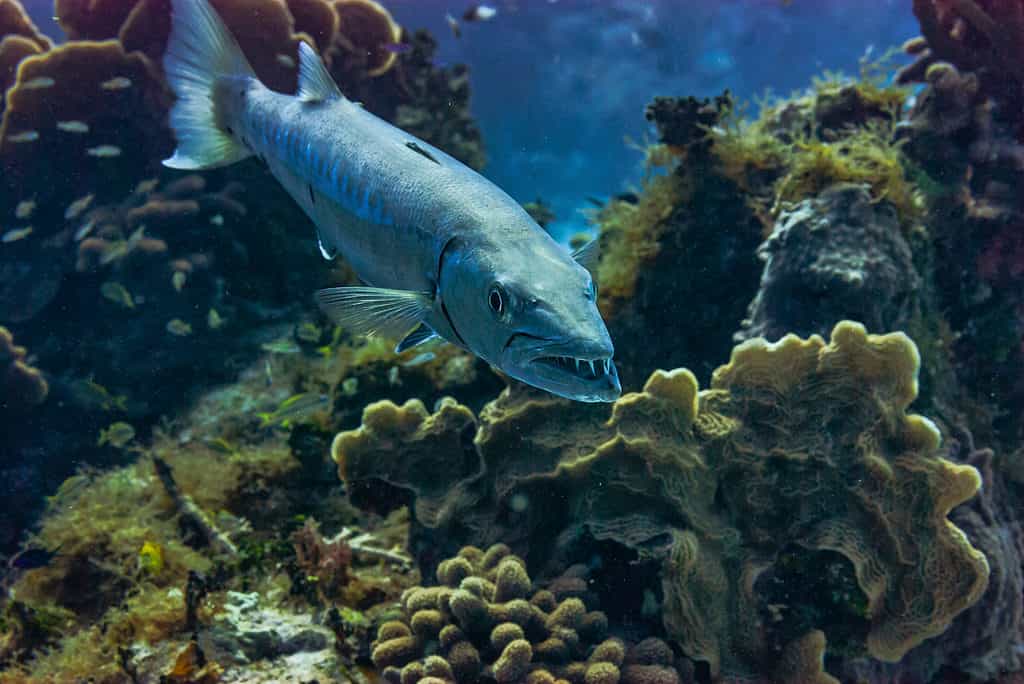
Great
barracuda
can reach over 100 pounds.
©Focused Adventures/Shutterstock.com
The barracuda is a large predatory fish with a torpedo-shaped body and razor-sharp teeth. They can grow over 5 feet long and weigh 100 pounds. Because of their size and ferocious appearance, they do not have many predators. Barracudas live in reefs and open ocean and devoir prey by cutting them into pieces. These fish can also swim up to 36 miles per hour!
6. Armadillo
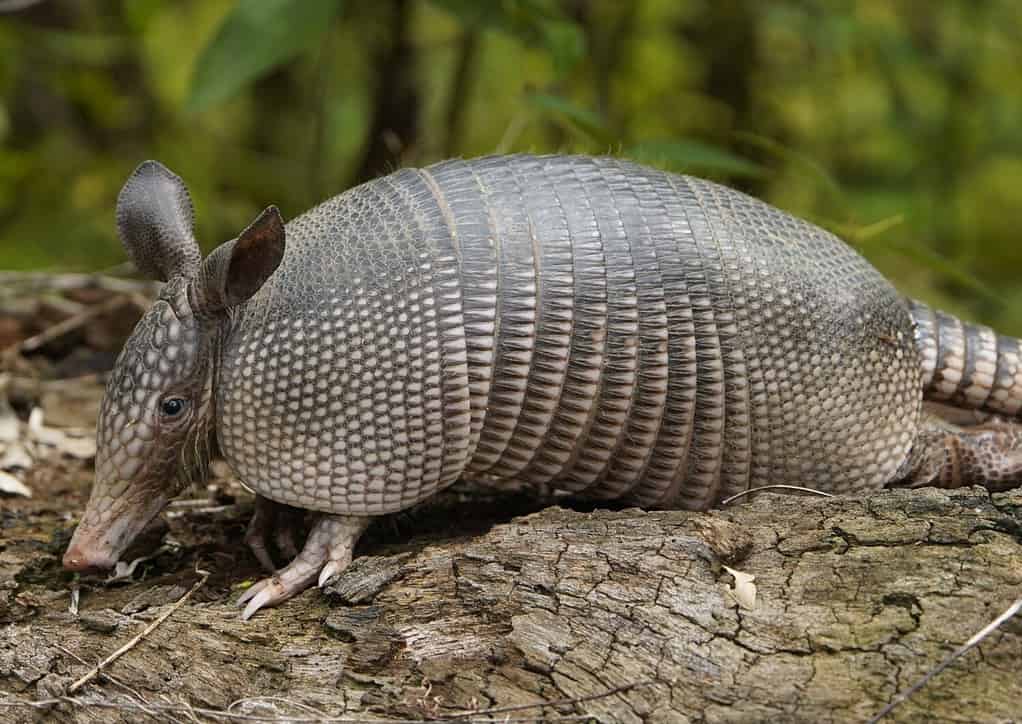
The
armadillo
lives in warmer weather near the equator.
©guentermanaus/Shutterstock.com
Armadillos are placental mammals known for their armored bodies and defensive behavior, where they curl into tight balls to protect themselves from predators. Like anteaters, they have long tongues that allow them access to insects buried underground, but they also eat plants, fruits, and dead animals. These animals like warmer weather, so you will typically find them in regions near the equator.
7. Chameleon
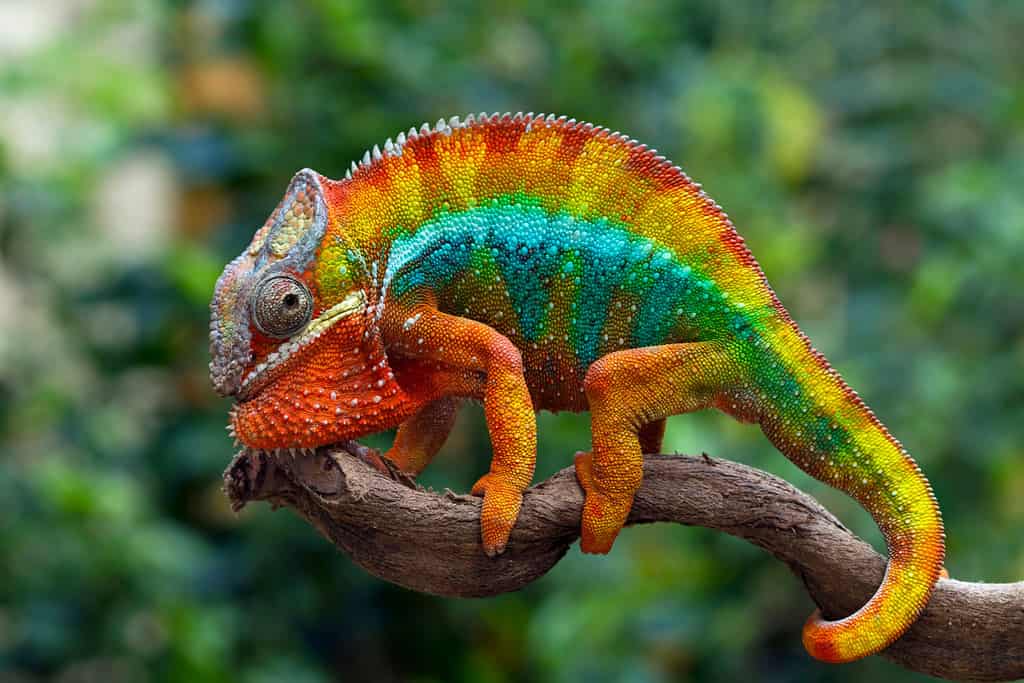
The spectacular colors of the panther
chameleon
make it a favorite pet among reptile lovers.
©Kurit afshen/Shutterstock.com
There are around 200 chameleon species, which are highly specialized lizards. And they are best known for their color-shifting abilities, perfectly camouflaging to their environment. But blending with their surroundings is not the only reason these lizards change colors. Different colors help them regulate their temperature and can also change depending on mood.
8. Alligator
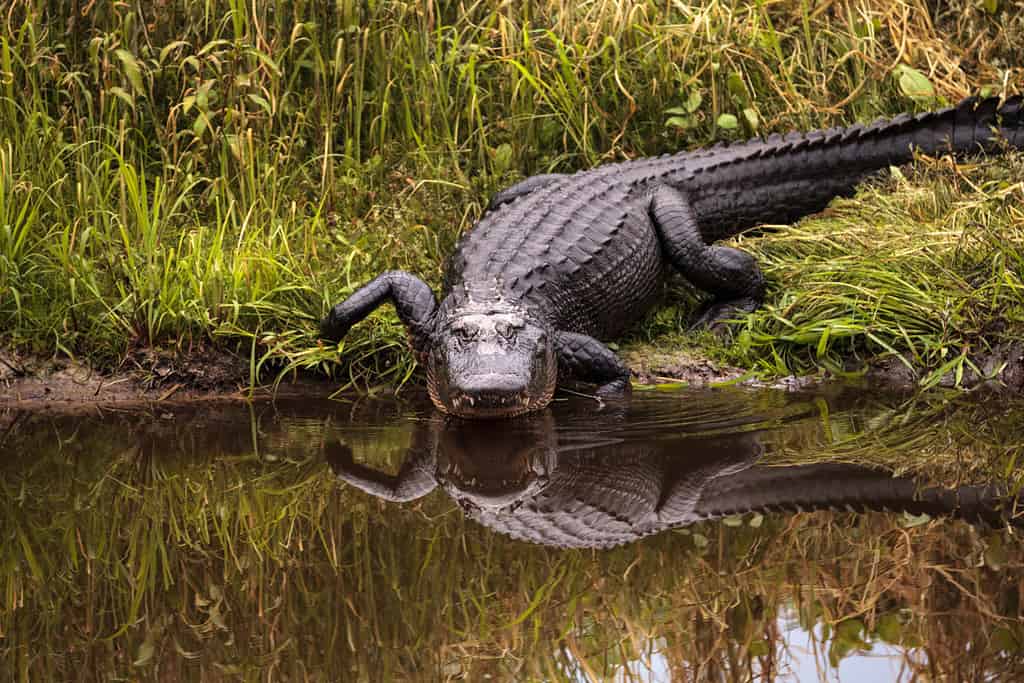
This nine-letter animal can run up to 35 miles per hour on land.
©SunflowerMomma/Shutterstock.com
Alligators, like crocodiles, are more closely related to dinosaurs than other modern reptile species. But unlike crocodiles, alligators do not typically live in saltwater habitats because they don’t possess salt-excreting glands. Alligators are enormous predators that can measure up to 15 feet long and weigh more than 1,000 pounds. And if you thought you could outrun an alligator, think again. These reptiles can run up to 35 miles per hour on land. Thankfully, they tire quickly.
9. Albatross
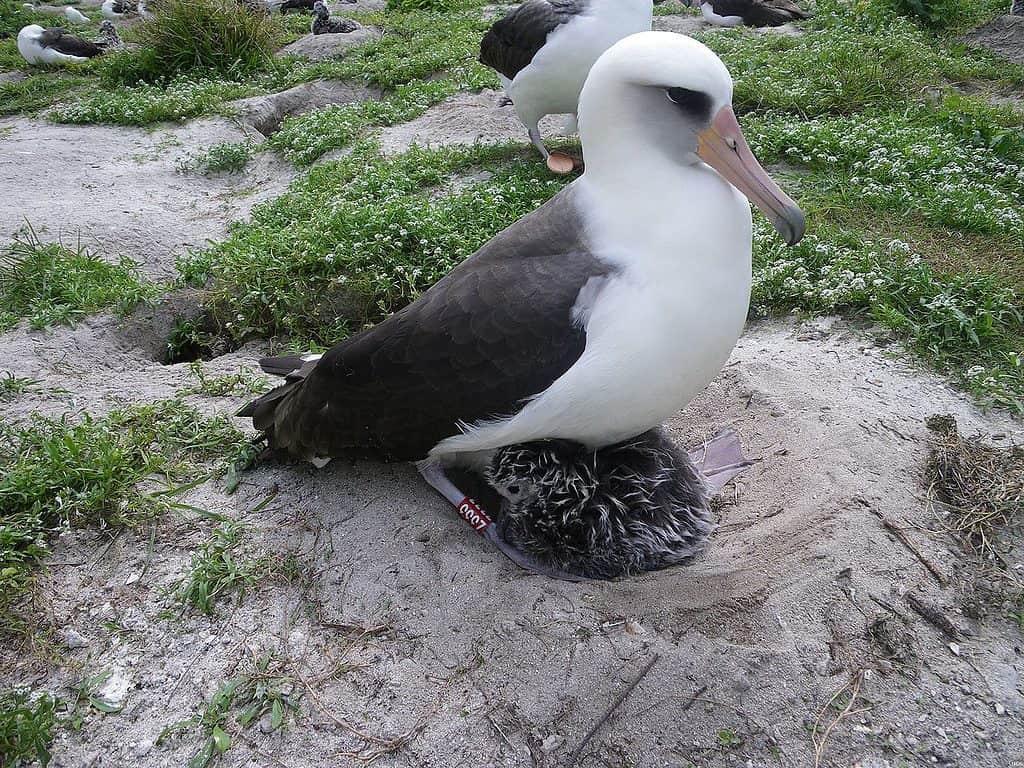
Wisdom the
albatross
is 70 years old, the oldest known wild bird. She just hatched her 40th chick.
©John Klavitter/U. S. Fish and Wildlife Service / public domain – License
These large seabirds live in the Southern and North Pacific Oceans, where they can go for years without ever touching land. These enchanting birds have wingspans up to 11 feet long, the longest of any living bird. And they can live an incredibly long time, like Wisdom the albatross who is currently in her early 70s! These long living birds even raise chicks well into their 60s. Albatrosses also mate for life and perform elaborate courtship dances.
10. Cassowary
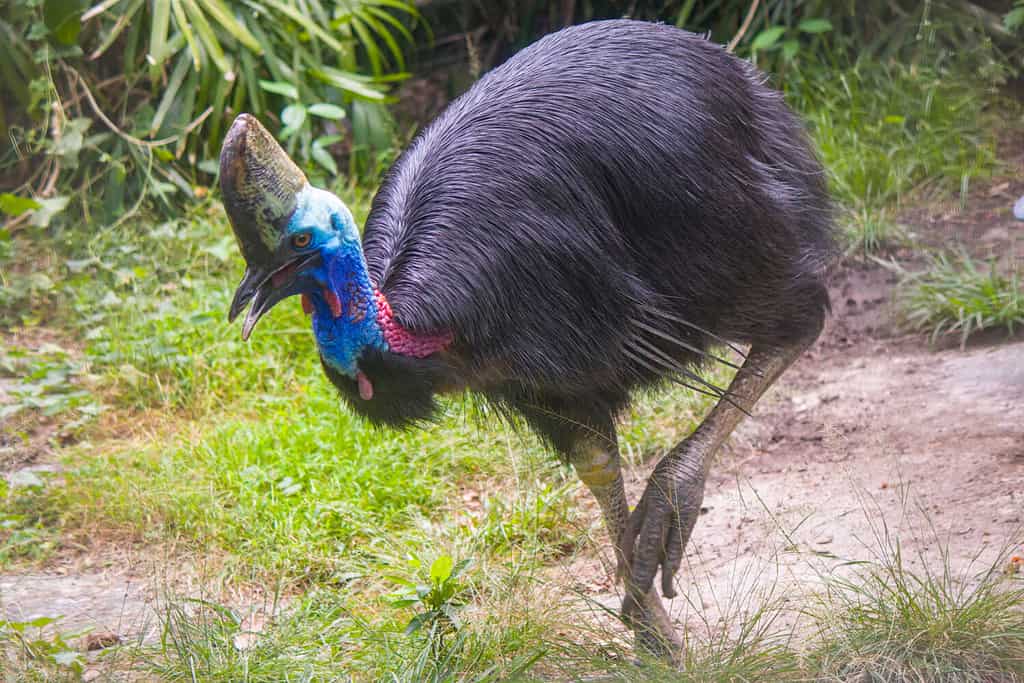
Cassowaries are known to get into kick fights with inanimate objects.
©Danny Ye/Shutterstock.com
The cassowary is an enormous flightless bird reminiscent of a velociraptor. They live in the tropical rainforests of Australia, where they grow to 6 feet tall and weigh over 100 pounds. Nicknamed “murderbird,” cassowaries can jump 5 feet off the ground and have enormous feet with long claws that can be deadly. But they typically only get into kick fights with inanimate objects. These birds are actually known for their shy and peaceful behavior.
A Comprehensive List of 30 Amazing 9-Letter Animals
| #1 | Crocodile |
| #2 | Orangutan |
| #3 | Wolverine |
| #4 | Porcupine |
| #5 | Barracuda |
| #6 | Armadillo |
| #7 | Chameleon |
| #8 | Alligator |
| #9 | Albatross |
| #10 | Cassowary |
| #11 | Dalmatian |
| #12 | Bandicoot |
| #13 | Butterfly |
| #14 | Cockroach |
| #15 | Chihuahua |
| #16 | Jellyfish |
| #17 | Millipede |
| #18 | Woodlouse |
| #19 | Pademelon |
| #20 | Pekingese |
| #21 | Greyhound |
| #22 | Dragonfly |
| #23 | Dachshund |
| #24 | Centipede |
| #25 | Binturong |
| #26 | Angelfish |
| #27 | Ichneumons |
| #28 | Springbok |
| #29 | Cockatiel |
| #30 | Cormorant |
The photo featured at the top of this post is © Audrey Snider-Bell/Shutterstock.com
Thank you for reading! Have some feedback for us? Contact the AZ Animals editorial team.



